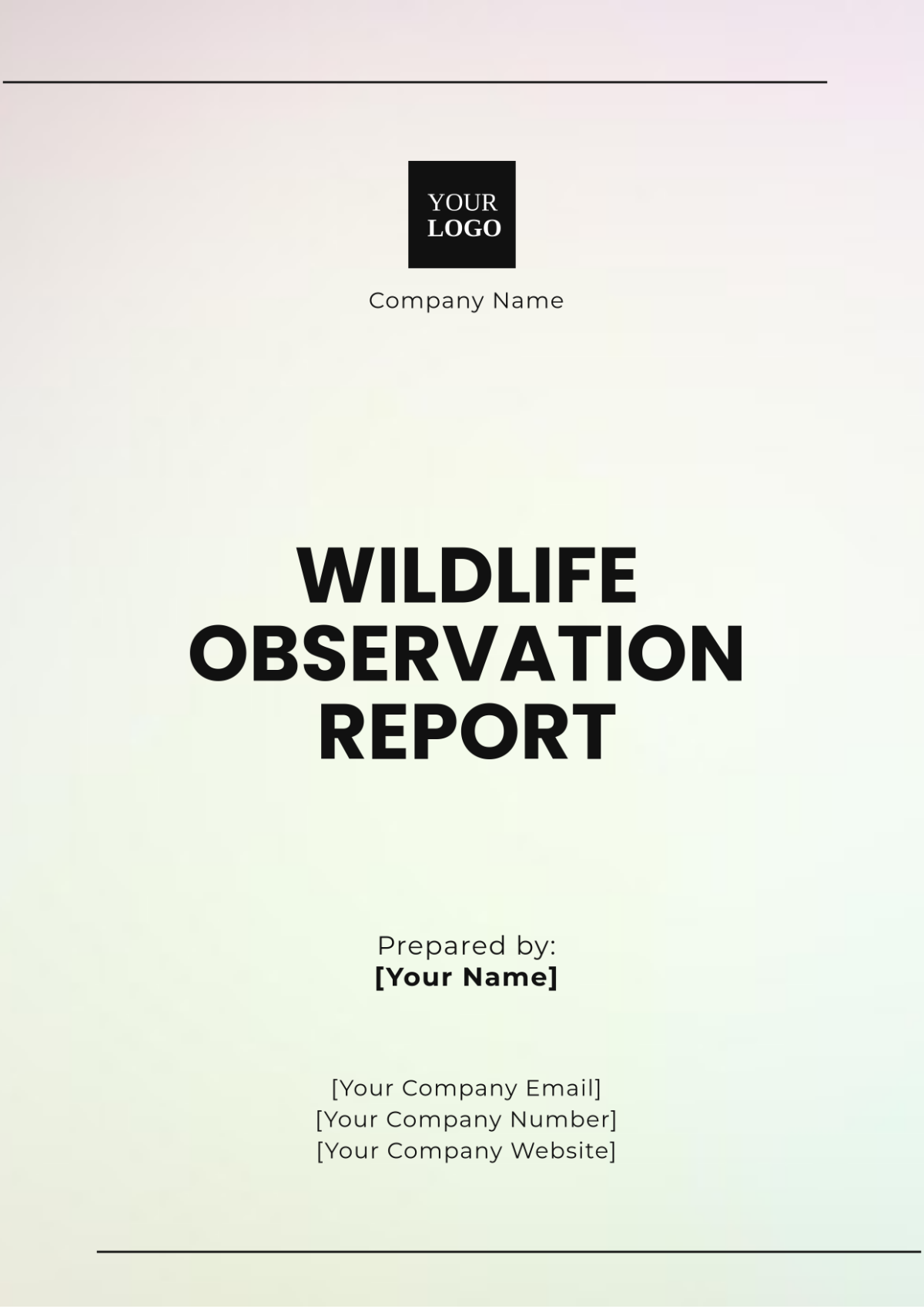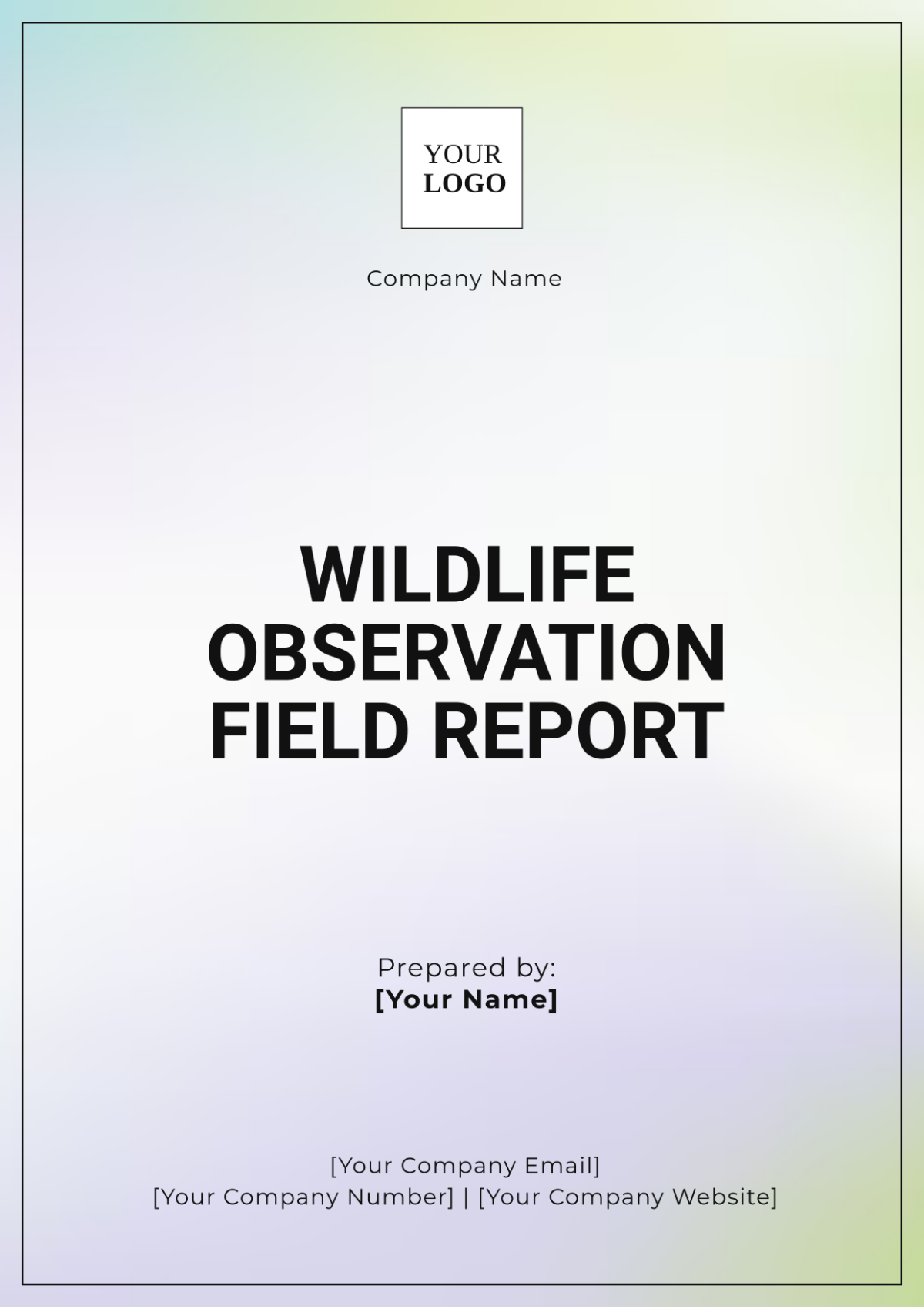Wildlife Observation Field Report
Prepared by: [Your Name]
Date: [Date]
I. Introduction
This Wildlife Observation Field Report documents the sightings and behaviors of various animal species within their natural habitats in the Lake District National Park, conducted over a period of two weeks, beginning in May 2050. The objective of this study was to provide a detailed record of the diversity of species, their behavioral patterns, and the ecological factors affecting local wildlife populations. The report aims to shed light on species interactions, environmental influences, and significant occurrences observed during the field research.
II. Species Information
A. Common Species Observed
The most commonly observed species during the field study included a range of mammals and birds, representative of the Lake District’s diverse ecosystems. Key species observed were:
Eurasian Red Squirrel (Sciurus vulgaris): Often spotted in the woodlands, the red squirrel population appears to be thriving, particularly in the mixed deciduous forests. Many individuals were observed foraging in groups.
Red Deer (Cervus elaphus): Numerous sightings of red deer, especially around the grasslands and forest edges, were recorded. Herds were seen grazing in the early morning and late evening hours. Males were actively involved in rutting behaviors.
European Otter (Lutra lutra): Otters were observed in multiple freshwater habitats, including rivers and lakes. They were spotted both during feeding sessions and play behaviors, often in family units.
Eurasian Bullfinch (Pyrrhula pyrrhula): Bullfinches were primarily observed near forest clearings and along the banks of rivers, feeding on seeds and berries. Their distinct calls were heard frequently, especially in the early mornings.
B. Rare or Endangered Species
Among the rarer species, two encounters stood out due to their importance for conservation efforts:
Eurasian Lynx (Lynx lynx): A rare sighting occurred on May 11, 2050, where a solitary male was observed near Greendale. It was likely a dispersing subadult looking for new territory. The presence of the lynx suggests a slow recovery of this apex predator in the region.
Western Capercaillie (Tetrao urogallus): The capercaillie, a large ground-dwelling bird, was spotted on May 15, 2050. The male was seen performing a courtship display during the early morning hours, an encouraging sign of reproductive success in this rare species.
III. Observational Data
A. Behavior Observations
Red Squirrels (Sciurus vulgaris): Female squirrels were observed at several feeding sites, where they appeared to share food resources with other females. This behavior suggests a shift in territorial dynamics, possibly due to the abundance of food sources like pine seeds and hazelnuts. Some interactions between males and females indicated early signs of mating behavior.
Red Deer (Cervus elaphus): During the rutting season, males were seen exhibiting classic dominance behaviors such as antler clashes and loud bellowing calls to establish dominance over females. The rutting activity seemed more intense than previous observations, possibly due to a higher concentration of competing stags in certain areas of the park.
European Otters (Lutra lutra): Family units of otters were observed swimming together and engaging in play behaviors, including chasing each other through the water and rolling in the sand. This play behavior is likely a key part of juvenile social bonding, which is vital for their survival in the wild.
B. Significant Occurrences
Date | Occurrence | Notes |
|---|---|---|
May 11, 2050 | Lynx sighting | A single male Eurasian lynx was seen near Greendale, likely a dispersing subadult. |
May 13, 2050 | Red deer rutting display | A large herd of red deer was observed at dawn, with dominant stags fighting for mates. |
May 15, 2050 | Capercaillie courtship | Male capercaillie seen performing an elaborate courtship display. |
May 17, 2050 | Otter family spotted | A group of four otters (one adult and three juveniles) was observed near Blea Tarn. |
IV. Environmental Conditions
A. Weather Conditions
The weather during the observation period was a mixture of clear, sunny days and intermittent rain showers, with temperatures fluctuating between 10°C and 19°C. The varying weather impacted animal visibility and behavior, with more activity observed during sunny, calmer days. Rainfall appeared to cause some species, such as the Eurasian bullfinch, to be less visible due to their preference for shelter during wet weather.
B. Habitat Description
The Lake District features diverse habitats that support an array of species. The most significant habitat types observed were:
Mixed woodlands: Rich in biodiversity, the woodlands provided a habitat for red squirrels, otters, and many bird species, including the Eurasian bullfinch.
Riparian zones: Streams and rivers were crucial for otters and red deer, with the latter frequently seen drinking and grazing near water sources.
Open grasslands: Red deer herds were most frequently observed in grassland areas during the rutting season, particularly in the Dove Valley region.
V. Analysis/Discussion
The data collected suggests that the Lake District’s ecosystem is thriving, with an increasing population of certain species such as the Eurasian red squirrel. The presence of rare species like the Eurasian lynx and Western Capercaillie indicates that conservation efforts have been partially successful. However, the behavior of the red squirrels, especially their communal feeding, suggests increased competition for resources, possibly due to habitat disruption from nearby human activities.
In addition, the interaction between otters and their environment, particularly their play behavior, may reflect a healthy ecosystem where social bonds are essential for survival. Climate variations, such as warmer winters and cooler summers, may be altering species distribution, and this warrants further investigation.
VI. Conclusion/Recommendations
Increased Monitoring: It is recommended to expand monitoring during peak wildlife activity periods, particularly in late spring and early autumn. This will allow for more comprehensive data collection on behavioral patterns, especially during the rutting season and in the presence of juveniles.
Habitat Preservation: Efforts should continue to protect and restore key habitats, particularly woodlands and riparian areas, to ensure long-term stability for rare species like the Eurasian lynx and the Western Capercaillie.
Public Awareness and Education: Promoting awareness about endangered species, especially the Eurasian lynx, through educational programs and guided tours will foster greater community involvement in conservation efforts.
Further Research on Climate Impact: Conduct additional studies to understand how changes in weather patterns and climate conditions are influencing species behavior and distribution across the park.
VII. References
Field Research Notes (May 2050). Lake District National Park Wildlife Survey.
Johnston, B., & Smith, H. (2050). Behavioral Ecology of European Wildlife. Cambridge University Press.
Watson, E., & Moore, T. (2050). The Effects of Climate Change on European Mammals. Oxford University Press.





